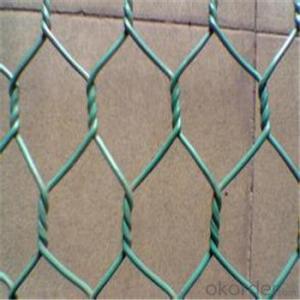Aluminum Plate 1/4 Thick
Aluminum Plate 1/4 Thick Related Searches
Led Light Bulbs For Ceiling Fixtures Led Lamps For Ceiling 42 In Ceiling Fan With Light Aluminum Coil Stock For Gutters Aluminum Foil For The Grill Hole Saw For Aluminum Plate Aluminum Tread Plate For Trailer Bow Plate For Aluminum Boat Aluminum Foil For Grow Room Aluminum Foil For Joint PainHot Searches
Stock Price For Aluminum Aluminum Coil Stock For Sale Aluminum Gutter Coil For Sale Used Aluminum Scaffolding For Sale 1/4 Aluminum Plate For Sale Aluminum Bar Stock For Sale Aluminum Round Stock For Sale Aluminum Diamond Plate For Sale Aluminum Scaffolding For Sale Craigslist 6061 Aluminum Plate For Sale Aluminum Dock Plate For Sale 7075 Aluminum Plate For Sale Aluminum Tread Plate For Sale Aluminum Checker Plate For Sale Aluminum Plate For Sale Near Me Plate Aluminum For Sale Aluminum Plate For Sale Aluminum Square Stock For Sale Aluminum Flat Stock For Sale Billet Aluminum Stock For SaleAluminum Plate 1/4 Thick Supplier & Manufacturer from China
Okorder.com is a professional Aluminum Plate 1/4 Thick supplier & manufacturer, offers integrated one-stop services including real-time quoting and online cargo tracking. We are funded by CNBM Group, a Fortune 500 enterprise and the largest Aluminum Plate 1/4 Thick firm in China.Hot Products
FAQ
- Yes, aluminum sheets can be used for HVAC systems. Aluminum is a popular material choice for HVAC applications due to its many advantageous properties. It is lightweight, making it easier to handle and install. Aluminum is also highly resistant to corrosion, which is crucial for HVAC systems that are exposed to moisture and varying temperatures. Additionally, aluminum has excellent thermal conductivity, allowing for efficient heat transfer. This makes it ideal for heat exchangers and other components in HVAC systems. Overall, aluminum sheets are a reliable and durable option for HVAC systems.
- Indeed, solar panel frames can be manufactured using aluminum sheets. The solar industry frequently employs aluminum due to its lightweight nature, durability, and ability to resist corrosion. When it comes to solar panel frames, aluminum proves to be an excellent selection as it offers structural support and can endure diverse weather conditions. Moreover, aluminum is easily recyclable, thereby presenting an environmentally conscious choice for solar panel manufacturers. All in all, aluminum sheets are a fitting material for the production of solar panel frames.
- Certain applications can utilize aluminum sheets as a replacement for steel. Aluminum, a versatile and lightweight material, offers numerous advantages over steel. Its high strength-to-weight ratio allows it to deliver comparable strength while being considerably lighter. This quality makes aluminum sheets an outstanding option for weight-sensitive applications, like those in the aerospace, automotive, and transportation industries. Furthermore, aluminum boasts exceptional corrosion resistance, negating the necessity for supplementary protective coatings or treatments. Consequently, aluminum sheets are suitable for employment in marine environments or other corrosive settings. Additionally, aluminum sheets possess remarkable thermal conductivity, making them ideal for applications that necessitate heat dissipation, such as heat exchangers or radiators. Moreover, aluminum is more pliable than steel, facilitating easier shaping and forming. This attribute renders aluminum sheets suitable for applications that require intricate or complex designs. However, it is vital to acknowledge that aluminum has lower tensile strength in comparison to steel. Consequently, in applications demanding substantial load-bearing capacities or structural integrity, steel may remain the preferred choice. In such instances, a thorough evaluation of specific requirements and trade-offs between weight, strength, and cost should be conducted before opting to use aluminum sheets as a steel substitute.
- Yes, aluminum sheets are suitable for automotive suspension components. Aluminum is a lightweight and strong material, making it ideal for reducing the overall weight of the vehicle and improving fuel efficiency. Additionally, aluminum offers good corrosion resistance, which is crucial for automotive applications.
- Yes, 101 aluminum sheets are suitable for decorative purposes. They offer a sleek and modern look, are lightweight, and can be easily customized or shaped to create various decorative elements.
- What's the difference between 6061 aluminum plate, 7075 aluminium plate and 6063 aluminum plate?
- Simply put, 6061 and 6063 belong to the 6 series, 6061 hardness in 90HB 6063 in 80HB, suitable for brazing, surface oxidation treatment is better, 7075 T6 hardness in 150HB, hardness is highestUsually 6061 and 6063 can be common
- There are several methods for cutting aluminum sheets, including shearing, sawing, laser cutting, waterjet cutting, and plasma cutting.
- In aerospace applications, aluminum sheets are commonly used due to their lightweight and high strength properties. The thickness of aluminum sheets used in aerospace applications can vary depending on the specific requirements of the component or structure being fabricated. Commonly used thicknesses for aluminum sheets in aerospace applications range from 0.016 inches (0.4 mm) to 0.25 inches (6.35 mm). These thicknesses are selected based on factors such as the desired strength-to-weight ratio, structural integrity, and the specific application or component being manufactured. Thinner aluminum sheets, such as those with a thickness of 0.016 to 0.040 inches, are often used for lightweight structures, interior components, and non-critical parts. These thinner sheets provide the necessary strength while minimizing weight. For more structural components, thicker aluminum sheets are employed. Thicknesses between 0.040 and 0.125 inches are commonly used for structural elements like floor panels, bulkheads, and wing ribs. These sheets offer increased strength and rigidity for supporting the aircraft's weight and managing the stresses experienced during flight. In certain cases, even thicker aluminum sheets may be used, ranging from 0.125 to 0.25 inches, for heavy-duty structural components or areas where additional strength is required. These thicker sheets are utilized in critical parts such as landing gear components, wing spars, and engine mounts to ensure the necessary structural integrity and load-bearing capability. It is important to note that these are general ranges, and the specific thickness requirements may vary depending on the aircraft type, design specifications, and the particular application within the aerospace industry.














































